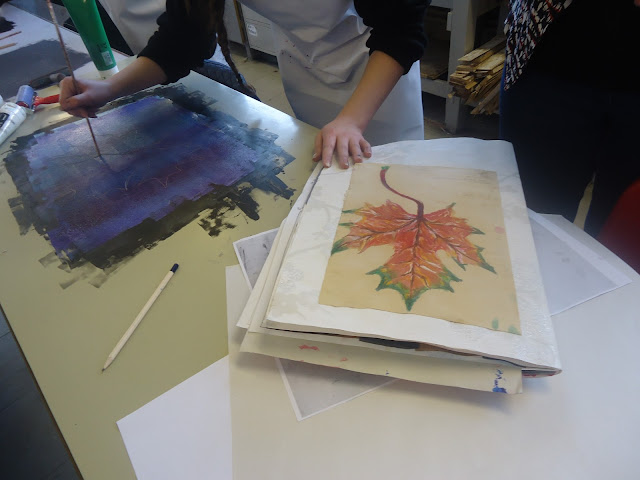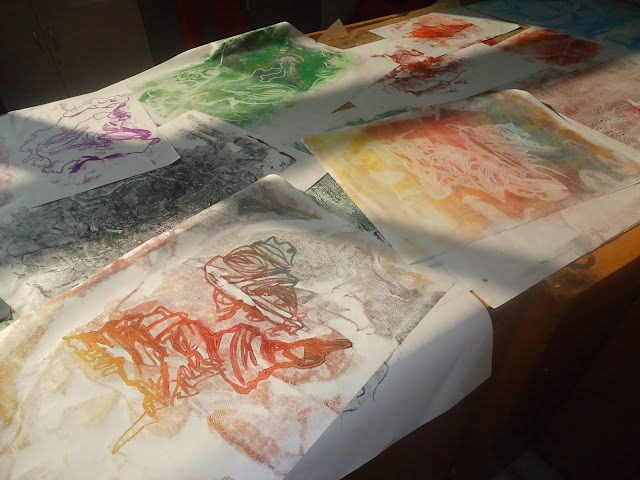Tuesday 26th March, ‘13
Future Artists Nottingham’s fourth workshop: COLLAGE.
Cutting and sticking, my EVERYONES favourite!
Normally when people think collage, they think messy cutting
and sticking, lots of layers and a lot of glue. But we wanted to expose the girls
to a new style of collage, the neat, minimalist and somewhat perfectionist approach..
We had them think back to the first drawing workshop and with
a continuous line draw a natural form; a pomegranate or a shell for example. By
drawing it in that way quite quickly they would have created numerous ‘opportunities’
within the drawing to collage; lots of
individual sections. The more sections the better; with lots of different shapes
to cut out and collage into with different colours and visual textures it would
be a really simple and effective way of creating tone.
We collected a variety of resources from charity shops to
cut up and work with such as road maps, and old novels, atlases and a fantastic
wildlife book to name a few. There were lots of examples of colour and tone and
an amazing assortment of visual textures to create depth and variety within the
work.
It was a simple process, but time consuming, our aim was for
each student to complete one collage during the afternoon.
The method:
1.
Draw out the object in continuous line
2.
Trace out an INDIVIDUAL section
3.
Stick the chosen material OVER the section (the
side you drew on)
4.
Turn the tracing paper over and cut out the
shape following the tracing lines on the other side
5.
The shape should fit perfectly into the area you
traced, so stick it on down back onto the drawing and repeat
6.
Voila! You should end up with a fantastic collage
This
session really went well, with it being the last workshop before the end of
term, we anticipated resistance and lack of concentration to a particularly challenging
task, so we felt this one would fit really nicely within the programme. The girls
definitely appreciated being able to take their time for once, they were able
to (for the most part) comfortably sink into the task and work at their own
pace. It was interesting to see a change in attitude from certain girls who had
not enjoyed particular sessions before but loved this one! A lot of lovely work
was produced all round and they have now learnt a really simple but incredibly
effective skill which they can use again and again.






































































